Home>diy>Building & Construction>What To Know When Building A Custom Home
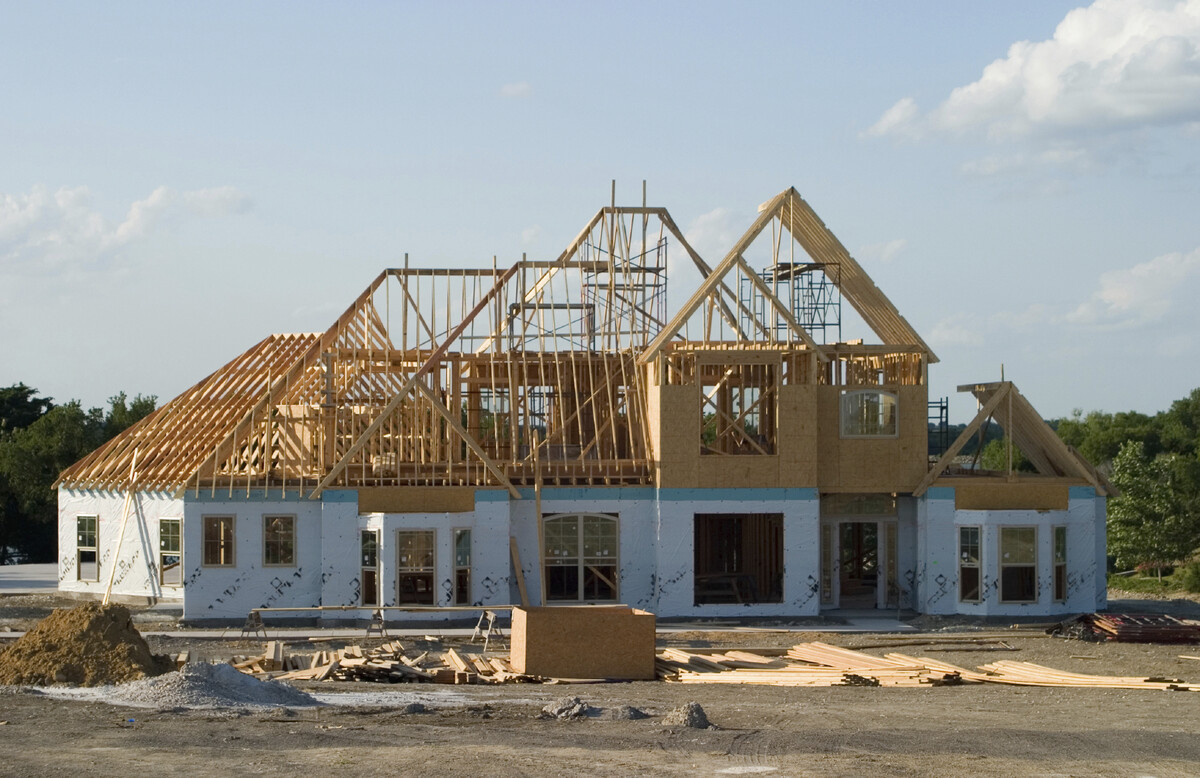

Building & Construction
What To Know When Building A Custom Home
Modified: March 24, 2024
Learn what you need to know about building a custom home, from construction processes to budgeting and design considerations. Start your dream home project today!
(Many of the links in this article redirect to a specific reviewed product. Your purchase of these products through affiliate links helps to generate commission for Storables.com, at no extra cost. Learn more)
Introduction
Building a custom home is an exciting journey that allows you to bring your dream living space to life. Whether you’re envisioning a modern masterpiece or a charming traditional home, embarking on a custom build gives you the opportunity to create a residence that is tailored to your unique preferences and lifestyle.
However, constructing a custom home is no small feat, and it requires careful planning and attention to detail to ensure a successful outcome. From finding the right location to choosing the perfect design and navigating the construction process, there are various factors to consider during the journey of building your dream home.
In this article, we will guide you through the essential aspects to know when building a custom home. By understanding these key elements, you’ll be better equipped to make informed decisions and create a home that truly reflects your vision and personality.
So, let’s dive in and explore the exciting world of custom home construction.
Key Takeaways:
- Building a custom home requires meticulous planning, attention to detail, and collaboration with professionals to ensure a space that reflects your vision and exceeds expectations.
- From finding the right location to adding the finishing touches, every step in the custom home construction process contributes to creating a unique and personalized living space.
Finding the Right Location
When it comes to building a custom home, one of the most crucial decisions you’ll make is selecting the right location. The location not only determines the value and potential resale of your home but also plays a significant role in your daily life.
Start by considering your lifestyle and priorities. Do you prefer a bustling urban environment or a serene suburban setting? Are you looking for proximity to schools, work, and amenities, or do you desire a more secluded and private location?
Research potential neighborhoods and visit them personally to get a sense of the area’s atmosphere and surrounding amenities. Consider factors such as proximity to schools, shopping centers, dining options, parks, and recreational facilities that align with your lifestyle and preferences.
Additionally, assess the potential for future development in the area. Are there any plans for new infrastructure or commercial projects that may impact the desirability and value of your home in the long run?
Furthermore, evaluate the quality of the land itself. Ensure that the plot is suitable for construction, free from any potential environmental hazards, and has the necessary infrastructure in place, such as access to water, electricity, and sewage systems.
Collaborating with a real estate agent who specializes in custom home builds can be highly beneficial during the location selection process. They can provide valuable insights and help you identify areas that best match your requirements.
Remember, finding the right location sets the foundation for your custom home and greatly influences your overall living experience. Take the time to carefully evaluate your options and select a location that aligns with your lifestyle, preferences, and long-term goals.
Selecting a Design and Architect
Choosing the design and architect for your custom home is a crucial step in the construction process. It sets the tone for the overall style, functionality, and aesthetics of your dream home. Here are key considerations when selecting a design and architect:
1. Research and Gather Inspiration: Start by exploring various architectural styles and gather inspiration from magazines, websites, and social media platforms. Create a vision board or a collection of images that resonate with your personal style and taste.
2. Identify Your Needs and Lifestyle: Consider your family size, daily routines, future plans, and specific needs. Do you require a multi-story home, open living spaces, or dedicated areas for hobbies or work? Think about how you want the spaces to flow and the overall functionality of the design.
3. Evaluate the Architect’s Portfolio and Expertise: Look for architects who have experience in designing custom homes and projects similar to your desired style. Review their portfolio to assess their design aesthetic and ensure it aligns with your vision.
4. Check for Credentials and Certifications: Verify that the architect is licensed and has the necessary certifications. This ensures their professional competence and adherence to industry standards.
5. Consider Collaboration and Communication: Building a custom home requires close collaboration between you and the architect. Look for an architect who is an excellent communicator, listens to your ideas, and values your input. A strong working relationship will ensure the success of your project.
6. Budget Considerations: Discuss your budget with the architect to ensure that the design aligns with your financial goals. A skilled architect can help you strike a balance between your vision and budget constraints.
7. Sustainability and Energy Efficiency: If sustainability and energy efficiency are important to you, seek an architect who specializes in environmentally-friendly design. They can incorporate features such as solar panels, energy-efficient insulation, and smart home systems into the design.
8. Client testimonials and references: Read client testimonials or ask for references from previous clients to get an idea of the architect’s professionalism, reliability, and ability to deliver on their promises.
Remember, selecting the right design and architect will contribute greatly to the success of your custom home. Take the time to research, interview several architects, and choose the one who not only understands your vision but also brings creativity and expertise to the table.
Hiring a General Contractor
Hiring a competent general contractor is vital to the success of your custom home construction project. A general contractor oversees all aspects of the construction process, coordinating various trades and ensuring that the project runs smoothly from start to finish. Here are some key considerations when hiring a general contractor:
1. Get Recommendations: Start by seeking recommendations from friends, family, or colleagues who have recently completed a custom home build. Their firsthand experiences can provide valuable insights into the quality of work and professionalism of different contractors.
2. Research and Interview Multiple Contractors: Research local contractors online and shortlist a few based on their reputation, experience, and expertise. Schedule meetings to interview them and assess their compatibility with your project goals.
3. Verify Licenses and Insurance: Before making a decision, ensure that the contractor is properly licensed and insured. This protects you from any liabilities or unforeseen issues that may arise during construction.
4. Review Portfolios and Past Projects: Ask potential contractors to provide portfolios of their previous work. Evaluate their craftsmanship, attention to detail, and ability to deliver on their promises. Additionally, ask for references and contact previous clients to gather feedback.
5. Understand Their Approach: Discuss the contractor’s approach to project management. Inquire about their subcontractor selection process, communication methods, and how they handle unforeseen issues or changes during construction. A reliable contractor should have a well-developed plan to ensure a smooth workflow.
6. Clear Communication: Effective communication is key to a successful partnership. Ensure that the contractor is responsive, communicates clearly, and provides regular updates throughout the project. This ensures that your vision and expectations are understood and met.
7. Contract and Pricing: Review the contractor’s proposed contract thoroughly. It should clearly outline project scope, timelines, payment terms, and warranties. Be cautious of contractors who provide significantly lower estimates, as they may cut corners or deliver subpar work.
8. Trust and Rapport: Building a custom home is a collaborative effort, so it’s essential to have trust and rapport with your contractor. Look for someone who understands your vision, respects your input, and is committed to delivering a high-quality home.
Remember, hiring a reputable and experienced general contractor ensures that your custom home construction project is executed professionally, efficiently, and with the highest level of craftsmanship. Take the time to thoroughly research, interview multiple contractors, and choose the one who aligns with your vision and values.
Establishing a Budget
Establishing a realistic budget is a crucial step in the custom home construction process. It helps you determine the scope of your project, make informed decisions, and ensure that your vision aligns with your financial capabilities. Here are some essential considerations when establishing a budget for your custom home:
1. Assess Your Finances: Take a thorough look at your financial situation and determine how much you can comfortably allocate to your custom home project. Consider your savings, income, and any potential loans or financing options available to you.
2. Identify Your Priorities: Prioritize your needs and wants. Determine what aspects of your custom home are non-negotiable and where you can be flexible. This will help guide your decision-making process and ensure that your budget is allocated accordingly.
3. Research Construction Costs: Research and understand the average costs associated with custom home construction in your area. Consider factors such as size, materials, finishes, and any unique or custom features you desire. This will give you a general idea of what to expect in terms of overall expenses.
4. Factor in Contingencies: Set aside a contingency fund to account for unexpected expenses that may arise during the construction process. It’s recommended to allocate around 10-20% of your total budget for contingencies to avoid financial strain if any issues or changes occur.
5. Consult with Professionals: Seek guidance from professionals such as architects, builders, and financial advisors who specialize in custom home construction. Their expertise can help you create a more accurate budget and avoid potential costly mistakes.
6. Obtain Multiple Quotes: Obtain quotes from multiple contractors and suppliers to compare prices and ensure that you’re getting the best value for your money. However, be cautious of significantly low estimates, as they may indicate compromising quality or overlooking essential aspects of your project.
7. Understand Long-Term Costs: Consider the long-term costs associated with homeownership, such as property taxes, insurance, ongoing maintenance, and utilities. It’s crucial to have a realistic understanding of these expenses to ensure that they fit within your budget beyond the initial construction phase.
8. Continuously Monitor and Track Expenses: Throughout the construction process, monitor and track your expenses closely. Regularly review your budget to ensure that you’re staying on track and make adjustments as necessary to manage costs effectively.
Remember, establishing a well-defined budget is essential for a successful custom home project. It provides financial clarity, helps guide decision-making, and ensures that your dream home is achievable within your means. Take the time to carefully assess your finances, seek professional advice, and create a budget that aligns with your vision and goals.
Obtaining Permits and Clearances
Obtaining the necessary permits and clearances is a critical part of the custom home construction process. Compliance with local building codes and regulations ensures the safety, structural integrity, and legality of your construction project. Here are essential considerations when navigating the permitting process:
1. Research Local Building Codes: Familiarize yourself with the building codes and regulations specific to your area. Each jurisdiction may have its own set of requirements, including zoning restrictions, setback requirements, and height limitations. Understanding these regulations will help you plan your project accordingly.
2. Hire a Professional: Engage the services of a professional who is knowledgeable about the local building codes and permit requirements. An architect or a general contractor can assist you in navigating the permitting process and ensure that your project complies with all regulations.
3. Develop Detailed Plans: Prepare detailed architectural and engineering plans that clearly outline the scope and specifications of your custom home. These plans will be necessary when applying for permits and will help the governing authorities understand your project’s design and compliance.
4. Submit Permit Applications: Work with your architect or contractor to complete and submit the required permit applications to the appropriate governing bodies. This may include applications for building permits, electrical permits, plumbing permits, and other permits related to specific aspects of your construction project.
5. Obtain Clearances and Approvals: Depending on your location and the specific requirements, you may need to obtain clearances and approvals from various departments, such as the environmental health department, fire department, and utilities providers. These clearances ensure that your project adheres to safety and environmental standards.
6. Pay Permit Fees: Certain permits may require payment of fees, which can vary depending on the scope and value of your construction project. Be prepared to cover these costs, and factor them into your budget when planning for your custom home.
7. Follow Inspection Procedures: Once permits are obtained, inspections will be scheduled at various stages of the construction process. Inspectors will assess compliance with building codes and regulations, ensuring that the work is being done properly and safely. Cooperate with inspectors and address any issues or concerns that may arise during inspections.
8. Keep Records: Maintain organized records of all permit approvals, clearances, and inspection reports. These documents serve as evidence of compliance and are important for future reference and potential resale purposes.
Remember, obtaining the necessary permits and clearances is crucial to ensure that your custom home construction project meets all legal requirements and building codes. Working with professionals and understanding the local regulations will help streamline the process and avoid potential delays or issues down the line.
Choosing Building Materials and Finishes
Choosing the right building materials and finishes for your custom home is an important aspect of the construction process. The materials and finishes you select will not only determine the overall aesthetics of your home but also impact its durability, functionality, and maintenance requirements. Here are essential considerations when making these choices:
1. Consider Your Style and Vision: Think about the overall style and ambiance you want to achieve in your custom home. Consider factors such as the architectural design, your personal preferences, and how the materials and finishes will complement your desired aesthetic.
2. Research Material Options: Explore the wide range of available materials and finishes for different components of your home. Consider factors such as durability, cost, maintenance requirements, and environmental impact. Common options include hardwood flooring, ceramic tiles, stone countertops, vinyl siding, and various types of roofing materials.
3. Assess Longevity and Maintenance: Evaluate the lifespan and maintenance needs of different materials. Some materials, like natural stone, may require regular sealing and upkeep, while others, like vinyl siding, are low maintenance and long-lasting. Consider your lifestyle and the amount of time you’re willing to invest in maintaining the materials.
4. Consider Energy Efficiency: Choose materials and finishes that contribute to the energy efficiency of your home. Look for options with high insulation properties, such as double-pane windows, insulated walls, and energy-efficient appliances. Energy-efficient materials can help reduce utility costs and create a more environmentally friendly home.
5. Balance Cost and Quality: Establish a budget for your materials and finishes and aim for a balance between cost and quality. It’s important to invest in high-quality materials that will withstand the test of time, but also ensure that they align with your budget constraints.
6. Seek Professional Advice: Consult with professionals such as architects, interior designers, or builders who have expertise in material selection. They can provide guidance based on your specific needs, budget, and design goals.
7. Consider Sustainability: If environmental sustainability is important to you, explore eco-friendly material options such as reclaimed wood, recycled materials, or sustainable building products. These choices can minimize your ecological footprint and contribute to a healthier living environment.
8. Visualize the End Result: Utilize visual tools such as 3D rendering or samples to help you visualize how different materials and finishes will look in your custom home. This can aid in making confident decisions and ensuring that your choices create the desired aesthetic impact.
Remember, the materials and finishes you choose for your custom home will have a significant impact on its overall appeal, functionality, and maintenance requirements. Take the time to research, consult with professionals, and select materials that align with your vision, budget, and long-term goals for your dream home.
Customizing Interior and Exterior Features
Customizing the interior and exterior features of your home is an exciting opportunity to infuse your personal style and create a space that reflects your unique taste and preferences. From selecting paint colors and flooring materials to designing outdoor spaces, here are key considerations when customizing the interior and exterior features of your custom home:
1. Interior Design Plan: Start by developing an interior design plan that outlines your vision for each room. Consider factors such as the desired color scheme, lighting, flooring, furniture, and window treatments. This plan will serve as a roadmap and help you make cohesive design choices throughout your home.
2. Flooring Selection: Choose flooring materials that not only align with your design aesthetic but also meet your functional needs. Consider options such as hardwood, laminate, tile, or carpet, and evaluate their durability, maintenance requirements, and comfort.
3. Paint Colors and Finishes: Selecting paint colors and finishes is a significant aspect of interior customization. Consider the desired mood, lighting, and overall ambiance of each room when choosing colors. Take samples and test them on your walls to see how they look in different lighting conditions.
4. Lighting Design: Plan the lighting layout to ensure optimal functionality and ambiance. Consider a combination of ambient, task, and accent lighting to create layers of light that enhance the function and aesthetics of each space. Explore options such as chandeliers, pendant lights, recessed lighting, and wall sconces.
5. Custom Cabinetry and Built-ins: Customized cabinetry and built-in features can greatly enhance the functionality and storage capacity of your home. Whether it’s a custom kitchen island, a built-in bookshelf or entertainment center, or a personalized closet system, these features add a touch of luxury and showcase your individuality.
6. Outdoor Living Spaces: Don’t forget to customize your outdoor spaces as well. Consider features such as a patio or deck, landscaping elements, outdoor kitchens, fire pits, or swimming pools. These features can enhance your enjoyment of the outdoor environment and create inviting spaces for entertaining and relaxation.
7. Window Treatments: Select window treatments that provide both privacy and style. Consider options such as blinds, curtains, shades, or shutters, and choose fabrics and colors that complement the overall design scheme of each room.
8. Personal Touches: Lastly, add personal touches such as artwork, family photos, and decorative accessories that reflect your personality and interests. These elements make your home truly unique and create a warm and inviting atmosphere.
Remember, customizing the interior and exterior features of your home is an opportunity to create a space that is a true reflection of your style and preferences. Take the time to plan, research different options, and make choices that align with your vision for a personalized and comfortable living environment.
Implementing Energy-Efficient Solutions
Implementing energy-efficient solutions in your custom home not only reduces your environmental impact but also helps lower your energy consumption and utility costs. With advancements in technology and sustainable practices, there are various ways to make your home more energy-efficient. Here are key considerations when implementing energy-efficient solutions:
1. Insulation and Air Sealing: Ensure proper insulation and air sealing throughout your home. This helps prevent heat loss or transfer, keeping your home comfortable and reducing the need for excessive heating or cooling. Choose insulation materials with high R-values and seal any gaps or cracks to minimize air leakage.
2. High-Efficiency Windows and Doors: Install high-performance windows and doors that offer excellent insulation and reduce heat transfer. Look for low-e coatings, multiple panes, and insulated frames. These features help keep the interior temperature stable while reducing the reliance on heating and cooling systems.
3. Energy-Efficient HVAC Systems: Choose an energy-efficient heating, ventilation, and air conditioning (HVAC) system that meets your home’s specific needs. Look for models with high energy efficiency ratings, such as Energy Star-certified equipment. Regularly maintain and clean the system to ensure optimal performance.
4. LED Lighting: Opt for LED (light-emitting diode) lighting throughout your home. LED bulbs use significantly less energy than traditional incandescent bulbs and have a longer lifespan. Install dimmers and timers to further optimize energy usage and enhance control over lighting levels.
5. Energy-Efficient Appliances: Select energy-efficient appliances, such as refrigerators, dishwashers, and washing machines. Look for the Energy Star label, which indicates that the appliance meets strict energy efficiency guidelines. These appliances not only reduce energy consumption but also save water and minimize environmental impact.
6. Smart Home Technology: Utilize smart home technology to enhance energy efficiency. Install programmable thermostats, which can automatically adjust temperature settings based on occupancy or time of day. Use smart power strips to prevent energy waste from electronics on standby mode, and consider automating lighting and other energy-consuming systems.
7. Renewable Energy Sources: Consider integrating renewable energy sources into your home. Options such as solar panels or geothermal systems can generate clean and sustainable energy, reducing reliance on traditional energy sources. You may also be eligible for government incentives or rebates to offset the initial costs.
8. Water Conservation: Implement water-saving measures, such as low-flow faucets, showerheads, and toilets. Collect rainwater for irrigation purposes and install efficient irrigation systems that optimize water usage. Properly insulate hot water pipes and consider energy-efficient water heaters.
Remember, implementing energy-efficient solutions not only benefits the environment but also contributes to long-term savings on utility bills. Incorporate these solutions into your custom home design to create a sustainable and energy-conscious living space.
When building a custom home, make sure to carefully review and understand the contract with your builder. Pay attention to details such as payment schedules, change order processes, and warranties to avoid any misunderstandings or disputes later on.
Read more: How To Build Custom Closet
Ensuring Proper Insulation and Ventilation
Proper insulation and ventilation are crucial elements in creating a comfortable and energy-efficient custom home. They help control temperature, reduce energy loss, prevent moisture buildup, and maintain a healthy indoor environment. Here are key considerations when ensuring proper insulation and ventilation:
1. Insulation Types and Placement: Choose insulation materials that are suitable for your climate and meet building code requirements. Common options include fiberglass, cellulose, spray foam, and rigid foam boards. Insulate walls, roofs, floors, and attics to prevent heat transfer and maintain consistent temperatures throughout your home.
2. Insulation Efficiency: Ensure that insulation is installed correctly and meets recommended R-values. The higher the R-value, the better the insulation’s thermal resistance. Consider factors such as local climate, building codes, and desired energy efficiency levels when determining the appropriate R-value for each area of your home.
3. Air Sealing: Seal air leaks around windows, doors, and other openings to prevent drafts and minimize energy loss. Use weatherstripping, caulk, and insulation to seal gaps or cracks. Pay attention to areas such as windowsills, baseboards, electrical outlets, and pipes, which are common sources of air leakage.
4. Proper Ventilation: Install a ventilation system that effectively exchanges indoor and outdoor air. Ventilation helps remove excess moisture, odors, and indoor pollutants, improving indoor air quality. Consider mechanical ventilation systems such as whole-house fans, exhaust fans, or heat recovery ventilators (HRVs) for proper air circulation.
5. Balanced Ventilation: Strive for balanced ventilation by maintaining an equal amount of incoming and outgoing air flow. This ensures efficient air exchange without causing negative pressure or excessive moisture buildup. Consult with professionals to determine the appropriate ventilation strategy for your custom home.
6. Moisture Control: Proper insulation and ventilation help control moisture levels in your home. Excess moisture can lead to mold growth and other moisture-related issues. Install vapor barriers, ensure adequate airflow, and address any water leaks or sources of moisture promptly to maintain a dry and healthy living space.
7. Energy Recovery Systems: Consider energy recovery systems such as heat recovery ventilators (HRVs) or energy recovery ventilators (ERVs). These systems transfer heat or coolness from the outgoing air to the incoming air, reducing energy loss and maintaining a consistent indoor temperature.
8. Regular Maintenance: Regularly inspect and maintain your insulation and ventilation systems. Check for signs of damage, such as mold growth or deteriorated insulation, and address any issues promptly. Keep air filters clean, ensure vents and exhausts are clear of obstructions, and schedule professional inspections to ensure proper functioning.
Remember, proper insulation and ventilation are essential for creating a comfortable, energy-efficient, and healthy living environment. Consult with professionals, follow building codes and guidelines, and implement the appropriate insulation and ventilation systems to ensure optimal performance in your custom home.
Installing Electrical, Plumbing, and HVAC Systems
Proper installation of electrical, plumbing, and HVAC (Heating, Ventilation, and Air Conditioning) systems is crucial for a functional and comfortable custom home. These systems provide essential services and play a vital role in maintaining a safe and convenient living environment. Here are key considerations when installing these systems:
1. Electrical System: Consult with a licensed electrician to design and install your home’s electrical system. Ensure that the system can handle your anticipated electrical loads and meets local building codes. Plan the placement of outlets, switches, and light fixtures to meet your needs and provide convenience in each room. Consider energy-efficient lighting options and allocate dedicated circuits for high-power appliances or electronics.
2. Plumbing System: Hire a professional plumber to design and install the plumbing system for your custom home. Ensure that the system complies with local plumbing codes and meets your specific needs. Design the layout to optimize water flow and minimize the distance between fixtures and water sources. Consider water-saving features such as low-flow fixtures, dual-flush toilets, and efficient water heaters. Properly insulate hot water pipes and consider options for water filtration and treatment systems if desired.
3. HVAC System: Collaborate with an HVAC contractor to select and install the appropriate heating and cooling systems for your home. Consider factors such as the size of your home, climate, energy efficiency, and your comfort preferences. Options include central air conditioning, heat pumps, furnaces, radiant flooring, or geothermal systems. Properly size and position ductwork and vents to ensure even distribution of conditioned air throughout your home. Install programmable or smart thermostats for energy optimization and convenience.
4. Safety Considerations: Ensure that electrical, plumbing, and HVAC systems are installed according to safety standards. Follow proper wiring, grounding, and ventilation guidelines to prevent hazards such as electrical shocks, water leaks, or gas leaks. Install smoke detectors, carbon monoxide detectors, and fire extinguishers in appropriate locations to enhance safety.
5. Energy Efficiency: Prioritize energy-efficient systems and components during the installation process. Choose Energy Star-rated appliances, high-efficiency HVAC systems, and energy-saving technologies. Proper insulation, air sealing, and windows also contribute to energy efficiency. Test and balance the HVAC system to ensure optimal performance and energy usage.
6. Regular Maintenance: Schedule regular maintenance for your electrical, plumbing, and HVAC systems. Inspect and clean filters, check for leaks or malfunctions, and address any issues promptly to avoid costly repairs or disruptions. Regularly schedule professional inspections to ensure that your systems are operating efficiently and safely.
7. Compliance with Local Codes: Ensure that all electrical, plumbing, and HVAC installations comply with local building codes and regulations. Obtain necessary permits and work with professionals who are familiar with local requirements to ensure proper installation and avoid potential legal issues.
Remember, proper installation of electrical, plumbing, and HVAC systems is crucial for a functional, safe, and comfortable custom home. Collaborate with professionals, choose energy-efficient options, and prioritize regular maintenance to ensure the longevity and optimal performance of these essential systems.
Incorporating Technology and Smart Home Features
In the age of advanced technology, incorporating smart home features into your custom home can greatly enhance convenience, energy efficiency, and overall living experience. From automated systems to remote control capabilities, here are key considerations when incorporating technology into your custom home:
1. Home Automation Hub: Install a central home automation hub that serves as the control center for all smart home devices. This hub allows you to manage and control various systems, such as lighting, security, climate control, and entertainment, from a single interface. Choose a hub that is compatible with a wide range of devices and offers user-friendly functionality.
2. Smart Lighting: Install smart lighting systems that can be controlled remotely or programmed to adjust based on your preferences. Incorporate features like dimming, color-changing, and motion sensors for enhanced energy efficiency and ambiance. Use smart switches or voice-activated assistants to control individual lights or groups of lights throughout your home.
3. Home Security and Surveillance: Integrate smart security systems that include features such as video doorbells, motion sensors, and security cameras. These systems allow you to monitor and control your home’s security remotely, receive alerts, and even communicate with visitors or potential intruders through your smartphone or tablet.
4. Energy Monitoring and Management: Use smart home devices to monitor and manage your energy usage. Install smart thermostats that learn your preferences and adjust temperature settings accordingly. Incorporate energy monitoring systems that provide real-time feedback on your energy consumption, allowing you to make informed decisions and optimize energy efficiency.
5. Voice-Activated Assistants: Incorporate voice-activated assistants, such as Amazon Alexa or Google Assistant, into your custom home. These devices allow you to control various smart home features, play music, answer questions, and even integrate with other home automation systems.
6. Entertainment Systems: Create a truly immersive entertainment experience with smart home features. Install multi-room audio systems that allow you to stream music throughout your home, or create dedicated home theaters with smart projectors and surround sound systems. Connect your entertainment devices to a smart hub for seamless control.
7. Smart Appliances and Connectivity: Opt for smart appliances that offer advanced features and connectivity. Consider smart refrigerators, ovens, washing machines, and other appliances that can be controlled remotely, provide energy-saving modes, or offer convenient built-in features.
8. Personalization and Integration: Customize your smart home features to suit your lifestyle and preferences. Create personalized routines, automate specific tasks, or integrate different systems to work together seamlessly. Consider compatibility with popular smart home ecosystems, such as Apple HomeKit or Samsung SmartThings, to expand your options.
Remember, incorporating technology and smart home features into your custom home can significantly enhance convenience, security, energy efficiency, and entertainment. Take the time to research and choose devices that align with your needs and preferences, and work with professionals who can help you seamlessly integrate these features into your custom home design.
Handling Landscaping and Outdoor Spaces
When building a custom home, it’s essential to pay attention to your landscaping and outdoor spaces. Thoughtful landscaping enhances the curb appeal, functionality, and overall enjoyment of your home. Here are key considerations when handling landscaping and outdoor spaces:
1. Assess Your Needs and Preferences: Consider how you will use your outdoor spaces and what activities you enjoy. Determine if you want areas for entertaining, gardening, relaxation, or outdoor recreation. This will help guide the design and layout of your landscaping.
2. Plan for Climate and Environment: Take into account your local climate and natural environment when planning your landscaping. Choose plants that are well-suited to your climate and consider incorporating sustainable landscaping practices, such as drip irrigation or native plantings, to conserve water and promote biodiversity.
3. Utilize Outdoor Structures: Incorporate outdoor structures such as patios, decks, pergolas, or gazebos to create defined spaces and add architectural interest. These structures provide shelter, shade, and gathering areas for outdoor activities.
4. Create Visual Interest: Use a variety of plants, textures, colors, and heights to create visual interest in your landscaping. Consider using different layers such as groundcovers, shrubs, and trees to add depth and dimension to your outdoor spaces.
5. Consider Privacy: Strategically plant trees, hedges, or install fencing to create privacy for your outdoor areas. This allows you to enjoy your space without feeling exposed to neighbors or passersby.
6. Incorporate Sustainable Practices: Implement sustainable landscaping practices, such as rain gardens, permeable paving, or the use of environmentally friendly materials. These practices help conserve water, reduce runoff, and promote a healthier ecosystem.
7. Outdoor Lighting: Install outdoor lighting to extend the functionality and enhance the ambiance of your outdoor spaces. Consider pathway lighting, uplighting for trees and architectural features, and strategically placed fixtures to highlight focal points in your landscaping.
8. Incorporate Water Features: Consider incorporating water features such as fountains, ponds, or waterfalls to create a soothing and tranquil atmosphere. These features can enhance the aesthetics of your outdoor spaces and provide a sense of relaxation.
9. Sustainable Irrigation: Install a sustainable irrigation system that conserves water and promotes efficient watering. Consider options such as drip irrigation, smart irrigation controllers, and rainwater harvesting systems to minimize water usage.
10. Consult with Professionals: Engage the services of a landscape architect or designer who can help you create a cohesive and well-designed outdoor environment. They can provide expertise on plants, materials, layout, and ensure that your landscaping complements the architectural style of your custom home.
Remember, thoughtfully designed landscaping and outdoor spaces can add value, beauty, and enjoyment to your custom home. Take the time to plan, consult with professionals, and create outdoor areas that reflect your lifestyle and enhance your overall living experience.
Read more: How To Build A Custom Mailbox
Managing the Construction Process
Managing the construction process of your custom home is a crucial task that requires careful planning, effective communication, and attention to detail. This process involves coordinating various contractors, suppliers, and timelines to ensure the successful completion of your dream home. Here are key considerations when managing the construction process:
1. Create a Detailed Plan: Develop a comprehensive construction plan that outlines all the necessary steps from start to finish. Include a timeline, budget, and specific details of each phase, such as obtaining permits, site preparation, foundation, framing, plumbing, electrical, and finishing touches. This plan serves as a roadmap to help you stay organized throughout the process.
2. Establish Clear Communication: Effective communication is key to successfully managing the construction process. Maintain open and consistent communication with your general contractor, architects, subcontractors, and suppliers. Clearly articulate your expectations, ask questions, and provide regular updates to ensure everyone is on the same page.
3. Regular Site Visits and Inspections: Visit the construction site regularly to monitor progress and address any concerns promptly. Conduct thorough inspections at various stages of the construction process to ensure that the work is being done correctly and according to your specifications. Document any issues or changes that need attention and communicate them to the appropriate parties.
4. Coordinate with Contractors and Suppliers: Collaborate closely with your general contractor to coordinate the efforts of various subcontractors and suppliers. Ensure that materials and equipment are delivered on time and that subcontractors have access to the site when needed. Address any delays or issues promptly to avoid unnecessary disruptions to the construction schedule.
5. Monitor Budget and Expenses: Keep a close eye on your budget and track expenses throughout the construction process. Regularly review invoices, payments, and change orders to ensure they align with the agreed-upon budget. Be prepared to make adjustments or decisions that may impact the budget, and communicate any changes to all relevant parties.
6. Address Changes or Modifications: Construction projects often involve changes or modifications along the way. It’s important to assess any requested changes promptly, considering their feasibility and potential impact on the timeline and budget. Communicate changes clearly to the general contractor and ensure that all parties involved are aware of the modifications.
7. Document and Organize: Keep detailed records of all construction-related documents, including contracts, permits, invoices, site visit notes, and change orders. Organize these documents in a system that is easily accessible for future reference or potential resale purposes.
8. Stay Flexible and Patient: Keep in mind that the construction process can be complex and may encounter unforeseen challenges along the way. Stay flexible and patient, understanding that adjustments and unforeseen delays may occur. Maintain a positive working relationship with the construction team and be open to finding practical solutions together.
Remember, effectively managing the construction process is essential for the successful completion of your custom home. By staying organized, maintaining clear communication, and addressing issues promptly, you can ensure a smoother construction experience and bring your dream home to reality.
Conducting Inspections and Quality Control
Conducting inspections and maintaining quality control is a critical aspect of the custom home construction process. Inspections help ensure that the work is being done according to the plans, specifications, and building codes, while quality control measures ensure that the final product meets your expectations. Here are key considerations when conducting inspections and quality control:
1. Building Inspections: Schedule regular building inspections with the appropriate local authorities. Inspections typically take place at various stages of the construction process, including foundation, framing, electrical, plumbing, and final walkthrough. These inspections verify that the work meets building codes and regulations, ensuring structural integrity and safety in your home.
2. Hire Independent Inspectors: Consider hiring independent inspectors who specialize in custom home construction. These professionals can offer an unbiased evaluation of the construction quality and compliance with standards. Independent inspectors provide an extra layer of assurance that the work is being done correctly and to the highest standards.
3. Document and Address Issues: Document any issues or concerns that arise during inspections or regular site visits. Take notes, photographs, and videos to provide evidence of any deficiencies. Communicate these issues to your general contractor or relevant subcontractors and request that they be addressed promptly. Regularly follow up to ensure that corrective measures are implemented.
4. Conduct Quality Control Checks: Perform quality control checks throughout the construction process. Inspect the workmanship, finishes, and materials to ensure they meet your expectations. Pay attention to details such as paint finishes, cabinetry installation, flooring, and overall craftsmanship. Request corrections or adjustments as needed to maintain the highest level of quality.
5. Material and Product Inspections: Inspect delivered materials and products before installation to ensure they meet the required standards and specifications. Check for quality, quantity, and any damage that may have occurred during transportation. Reject or request replacements for any subpar or defective items.
6. Collaboration with Professionals: Collaborate closely with your general contractor, architects, and subcontractors to establish expectations for quality control. Clearly communicate your standards and requirements, and encourage open dialogue to address any concerns or questions. Regularly meet with the construction team to review progress and ensure that quality aspects are being upheld.
7. Utilize Quality Assurance Programs: Consider participating in quality assurance programs or certifications specific to the construction industry. These programs provide standardized guidelines and inspections to promote exceptional quality and craftsmanship. They can offer additional assurance that your custom home is being built to the highest standards.
8. Final Walkthrough and Punch List: Conduct a thorough final walkthrough before accepting the completed home. Document any remaining items or defects that need to be addressed before finalizing the construction project. Create a punch list and ensure that all items are resolved to your satisfaction before closing on the home.
Remember, inspections and quality control measures are essential for ensuring that your custom home is built to the highest standards. By conducting regular inspections, addressing issues promptly, and maintaining ongoing quality control, you can have confidence in the craftsmanship and final product of your dream home.
Adding Finishing Touches
Adding the finishing touches to your custom home is an exciting step that brings your vision to life and adds those special details that make a house feel like a home. These final touches tie everything together and contribute to the overall aesthetics and functionality of your living space. Here are key considerations when adding the finishing touches:
1. Flooring and Wall Treatments: Install the final flooring materials, whether it’s hardwood, tile, carpet, or a combination that suits your style and needs. Apply paint or wallpaper to the walls, incorporating colors and textures that complement your desired aesthetic. Consider accent walls or decorative finishes to add character and visual interest.
2. Trim and Molding: Install trim and molding to provide a polished look throughout your home. Choose styles and profiles that align with your design preferences, whether it’s traditional, modern, or a combination of both. Consider crown molding, baseboards, wainscoting, and window casings to create a sophisticated finish.
3. Cabinetry and Built-ins: Install the final cabinetry and built-ins such as kitchen cabinets, bathroom vanities, closet systems, or bookshelves to enhance functionality and storage. Choose finishes, hardware, and organizational features that suit your taste and lifestyle.
4. Plumbing and Electrical Fixtures: Install plumbing fixtures such as faucets, showerheads, toilets, and sinks that match your desired style and functionality. Choose lighting fixtures that complement your design aesthetic, from chandeliers and pendant lights to recessed lighting and wall sconces. Consider energy-efficient LED bulbs and dimming capabilities for personalized lighting.
5. Window Treatments: Install window treatments to add privacy, control sunlight, and enhance the overall design of each room. Consider options such as blinds, curtains, shades, or shutters that align with your style and provide the desired level of light filtration and privacy.
6. Hardware and Accessories: Select hardware for doors, cabinets, and drawers that adds a touch of elegance and functionality. Choose coordinating door handles, drawer pulls, and knobs that match your overall design concept. Don’t forget to accessorize your space with decorative items such as artwork, mirrors, rugs, and plants to personalize and add warmth to your home.
7. Landscaping and Outdoor Features: Complete your outdoor spaces by adding landscaping elements and features. Plant trees, flowers, and shrubs to enhance the beauty and curb appeal of your home. Install outdoor amenities like patio furniture, fire pits, or water features to create inviting and functional outdoor living areas.
8. Personal Touches: Finally, add personal touches that reflect your style, interests, and memories. Display family photos, artwork, or sentimental objects throughout your home. Incorporate unique accessories and décor items that make you feel connected to your space.
Remember, the finishing touches of your custom home are what make it uniquely yours. Take the time to carefully select and install these final elements to create a space that reflects your personality and brings you joy every time you walk through the door.
Completing Final Walkthrough and Inspection
The final walkthrough and inspection are crucial steps in the custom home construction process. This is your opportunity to thoroughly evaluate the completed home, ensure that everything is in order, and address any remaining concerns before officially accepting the property. Here are key considerations when completing the final walkthrough and inspection:
1. Schedule a Detailed Walkthrough: Arrange a time with your general contractor to conduct a comprehensive walkthrough of the entire home. Allow sufficient time to thoroughly inspect every room, floor, and exterior area. Take note of any concerns or items you would like addressed before finalizing the construction project.
2. Follow a Checklist: Create a detailed checklist to guide you during the walkthrough. Include aspects such as finishes, electrical and plumbing fixtures, functionality of appliances, doors and windows, and any other specific details that are important to you. Inspect the quality of the workmanship and materials, ensuring they meet your expectations.
3. Test All Systems: Fully test all systems in the home, including electrical, plumbing, HVAC, and security systems. Turn on lights, faucets, appliances, and heating/cooling units to ensure they are in proper working order. Check for any leaks, strange noises, or malfunctions and note them for further inspection or repairs.
4. Evaluate Exterior Areas: Pay attention to the exterior elements of your property. Inspect the landscaping, hardscaping features, outdoor lighting, and any other planned additions. Ensure the grading and drainage are properly addressed to prevent water issues and evaluate the overall curb appeal.
5. Document Any Concerns: Create a written record of any remaining concerns or issues identified during the walkthrough. Take photos or videos to document these concerns for future reference. Share this list with your general contractor and discuss a plan for addressing each item before closing on the home.
6. Coordinate Repairs and Resolutions: Work closely with your general contractor to develop a plan for addressing the noted concerns. Determine a timeline for completing the repairs or adjustments needed to meet your expectations. Communicate your expectations clearly and ensure that the agreed-upon resolutions are documented in writing.
7. Finalize Paperwork: Review all documentation related to the construction project, including contracts, warranties, and permits. Ensure that all necessary paperwork is in order and that you have a complete record of the entire construction process. Confirm that any outstanding invoices have been settled and that you have received all relevant documents for future reference.
8. Obtain Final Inspections and Certifications: Coordinate final inspections with the appropriate authorities to ensure compliance with local building codes and regulations. Obtain any necessary certificates of occupancy or completion that may be required by your local jurisdiction.
Remember, the final walkthrough and inspection give you the opportunity to address any remaining concerns before officially accepting your custom home. Take your time, be thorough, and maintain open communication with your general contractor to ensure that you are fully satisfied with the final product.
Read more: What To Know About Building A House
Conclusion
Building a custom home is an exciting journey that allows you to bring your dream living space to life. Throughout the process, careful attention to every detail is crucial to ensure the successful completion of your dream home. From finding the right location to selecting the perfect design, hiring the right professionals, and managing the construction process, each step plays a significant role in creating a home that reflects your vision and meets your expectations.
Key considerations such as establishing a budget, obtaining permits and clearances, choosing building materials, and implementing energy-efficient solutions contribute to the functionality, sustainability, and aesthetics of your custom home. With the addition of technology and smart home features, you can enhance convenience, energy efficiency, and overall living experience.
From handling landscaping and outdoor spaces to conducting inspections and completing the final walkthrough, the finishing touches of your custom home tie everything together and make it uniquely yours. By adding personal touches and paying attention to quality control, you can create a space that reflects your style and meets the highest standards.
Throughout the construction process, effective communication, collaboration with professionals, and meticulous attention to detail are essential. Regular site visits, thorough inspections, and open dialogue ensure that your custom home is built to the highest standards and that any concerns or issues are addressed promptly.
In conclusion, building a custom home requires careful planning, attention, and collaboration with experienced professionals. By understanding the essential considerations and taking the necessary steps to ensure quality, functionality, and personalization, you can create a custom home that not only meets your needs but also exceeds your expectations. From the first steps of designing and acquiring the right permits to the final touches and inspections, your dream home becomes a reality that you can proudly call your own.
Frequently Asked Questions about What To Know When Building A Custom Home
Was this page helpful?
At Storables.com, we guarantee accurate and reliable information. Our content, validated by Expert Board Contributors, is crafted following stringent Editorial Policies. We're committed to providing you with well-researched, expert-backed insights for all your informational needs.

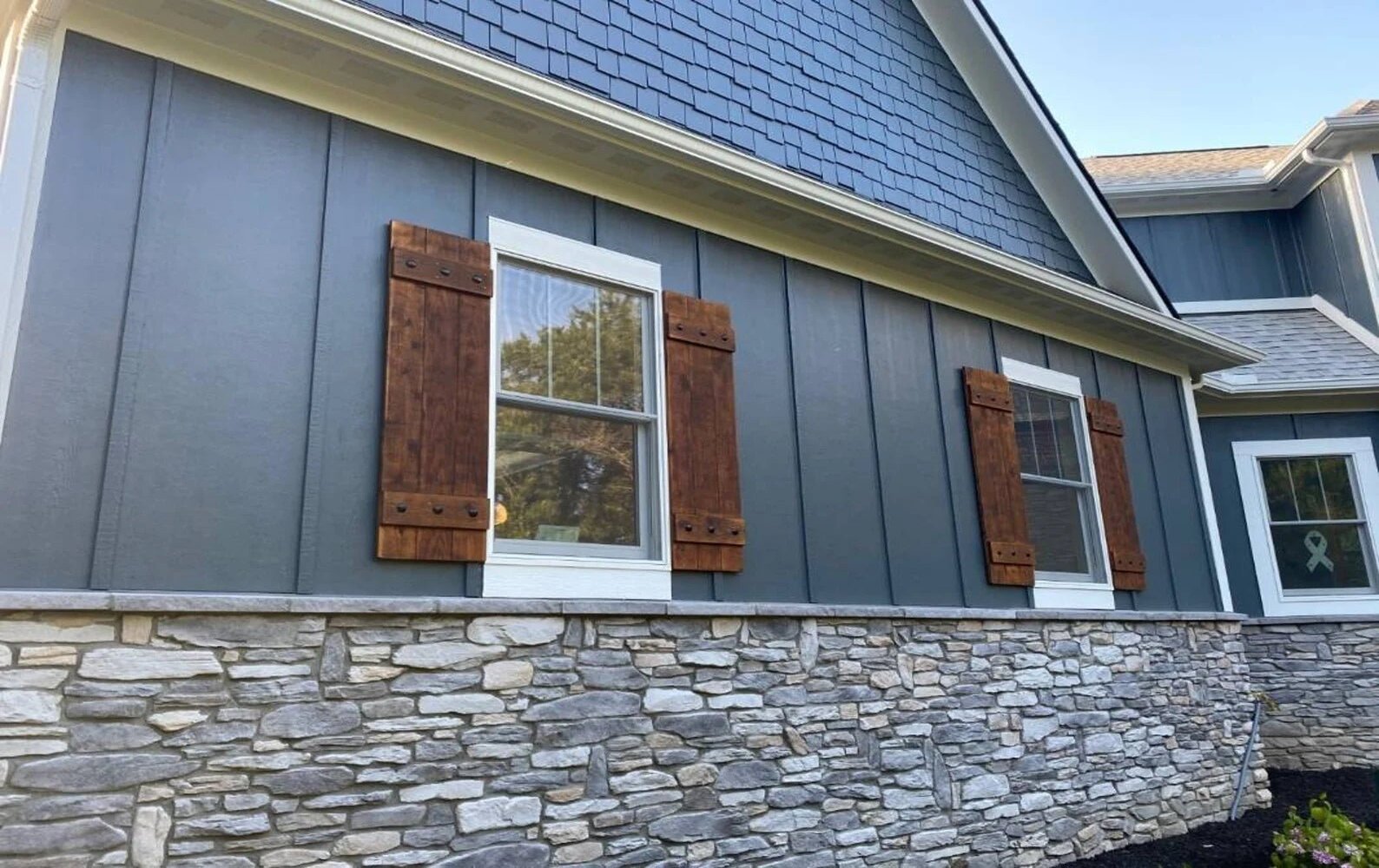
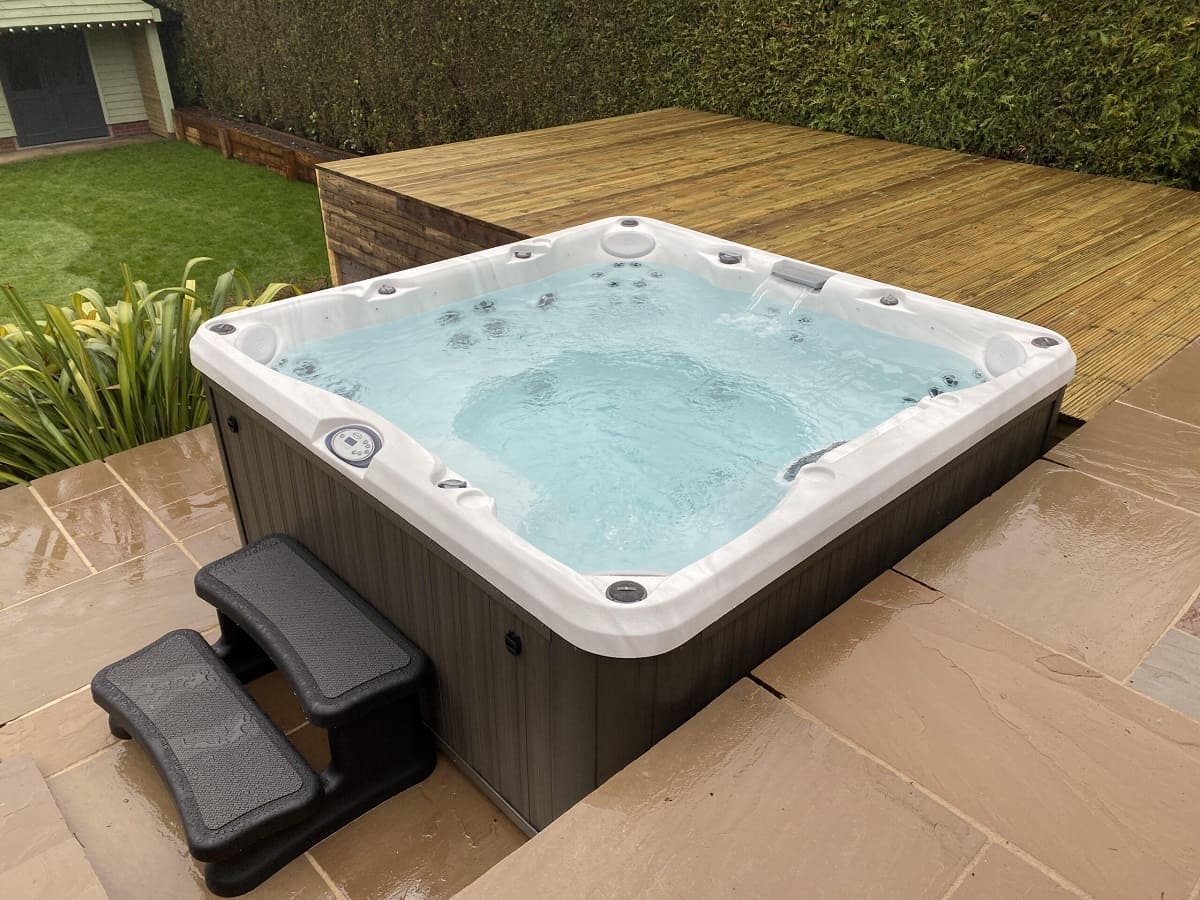

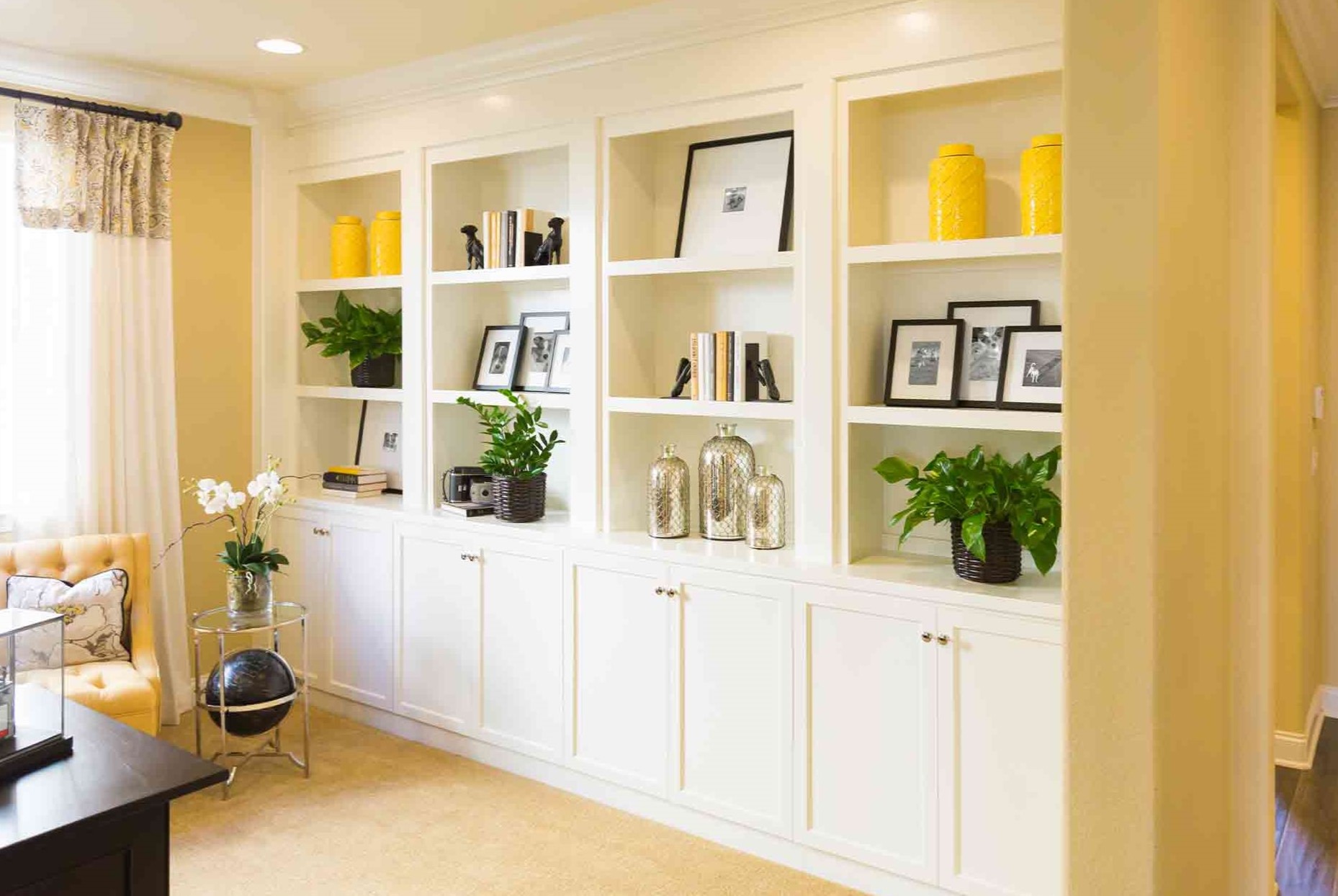

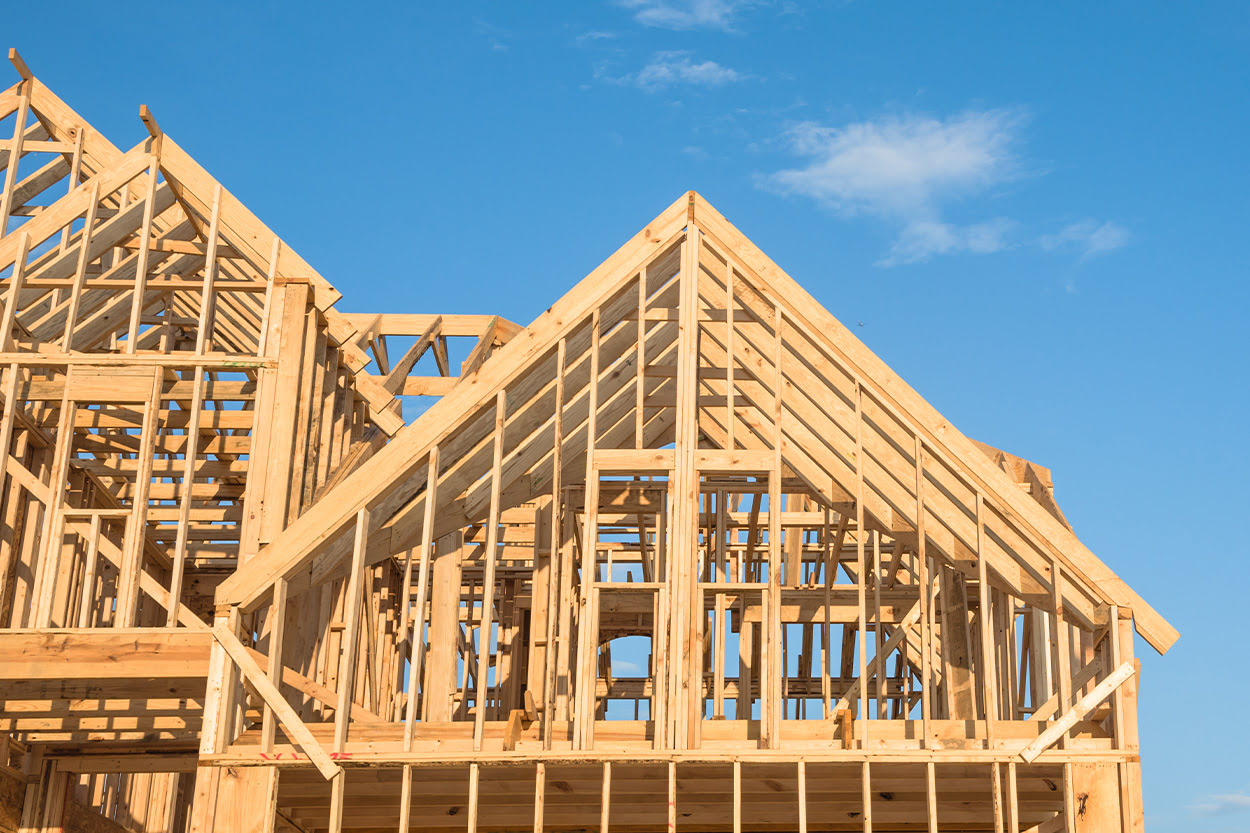
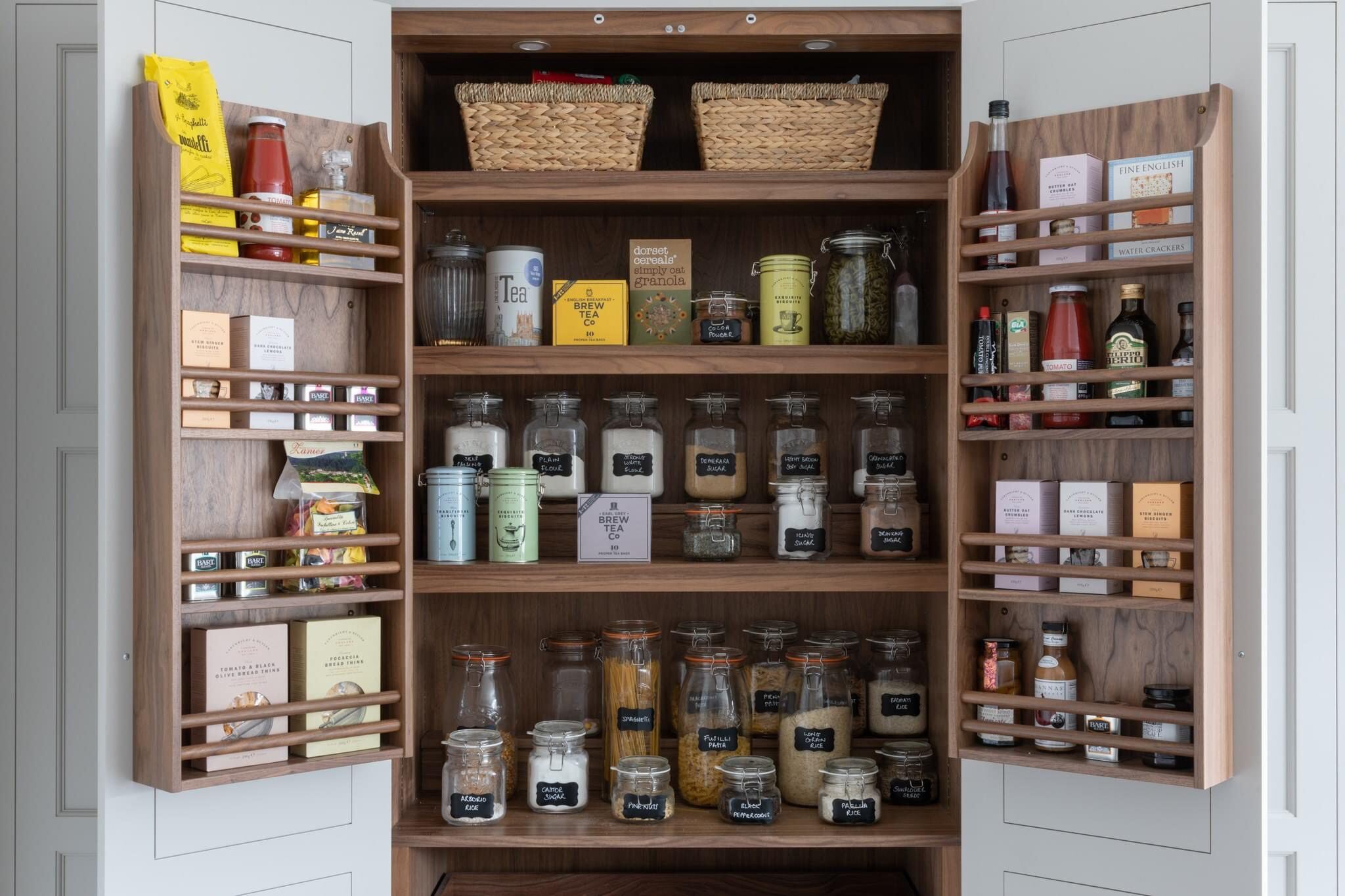

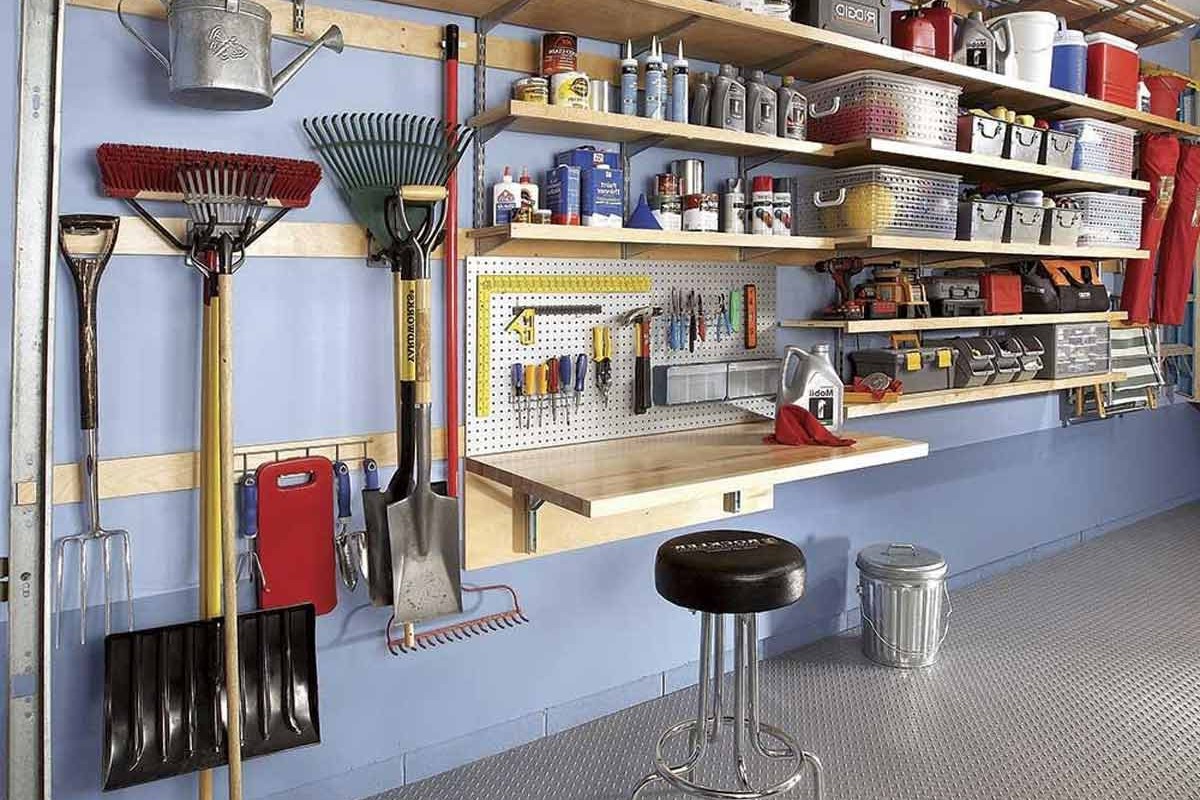
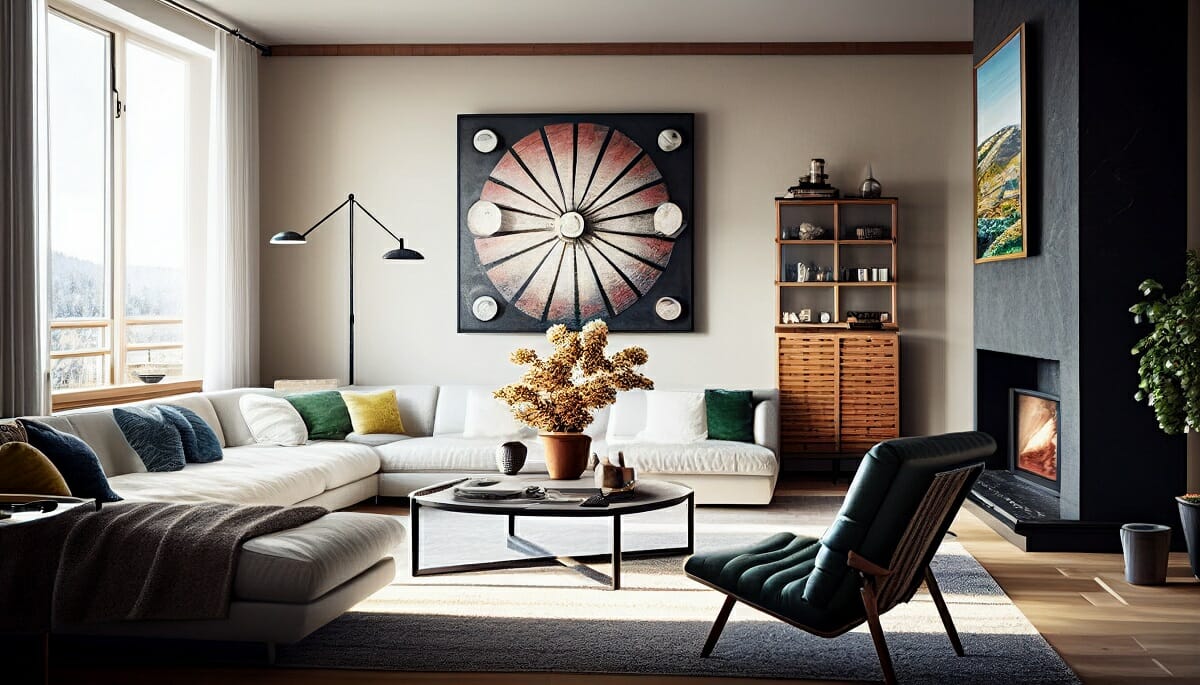

0 thoughts on “What To Know When Building A Custom Home”